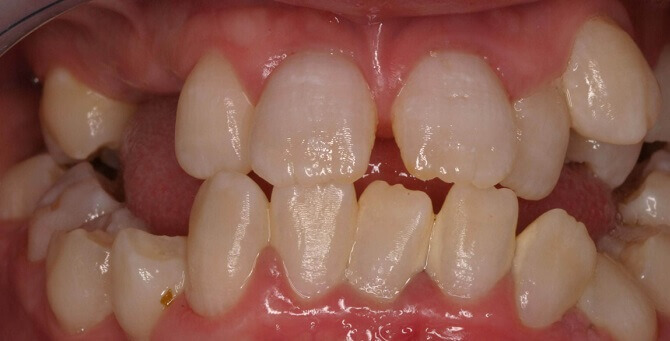What are the teeth disorders and diseases? Information about the causes and treatment of teeth disorders and diseases.
Among the major diseases and disorders of the teeth and their supporting tissues are decay of the enamel and dentin, inflammation and destruction of the gums, and malocclusion, or faulty tooth alignment.

Dental Decay.
Dental decay, or dental caries, results from a series of events. First, a yellowish white material, called dental plaque, forms on the teeth. Next, bacteria become enmeshed in the plaque and convert fermentable carbohydrates, such as sugars, into acids. These acids destroy the enamel and dentin by removing the minerals, mostly calcium and phosphorus, from them. The destroyed area is called a cavity.
Dental decay should be treated before it spreads and affects the entire tooth. The dentist, after removing the decayed area, fills the cavity with silver amalgam or other filling materials. The best defense against dental decay is prevention. Fluorides in the drinking water and in toothpaste are effective in reducing dental cavities, and proper toothbrushing and use of dental floss to remove dental plaque is essential. Reducing the intake of sweets is another preventive measure.
Periodontal Disease.
Diseases of the gums and other supporting tissues progress slowly and result often from irritation of the tissues. Pyorrhea, or advanced gum disorder, is a major cause of tooth loss in adults.
Periodontal disease most often results from the accumulation of dental plaque on the teeth. Unless dental plaque is removed, it hardens into a calcified material known as dental tartar, which causes gum irritation. Dental tartar can be removed only by a dentist or oral hygienist.
Malocclusion.
An improper alignment of the teeth may be inherited. Other factors that may cause malocclusion are loss of teeth and direct pressure on the teeth, which may occur in a child who sucks his thumb. In many cases it is best to treat a malocclusion early. Treatment usually entails the use of braces or other appliances.
Others.
The size, shape, number, and structure of the teeth may be affected by a variety of diseases and disorders. Genetic factors as well as factors affecting the development of the embryo may cause tire development of too many or too few teeth. Unusual molar and incisor shapes may be associated with congenital syphilis. A deficiency of vitamin D may result in abnormal enamel development. Fluorosis is a mottling of the enamel that results from the ingestion of unusually large amounts of fluorides. Although the teeth are somewhat brittle, they are more resistant to decay.